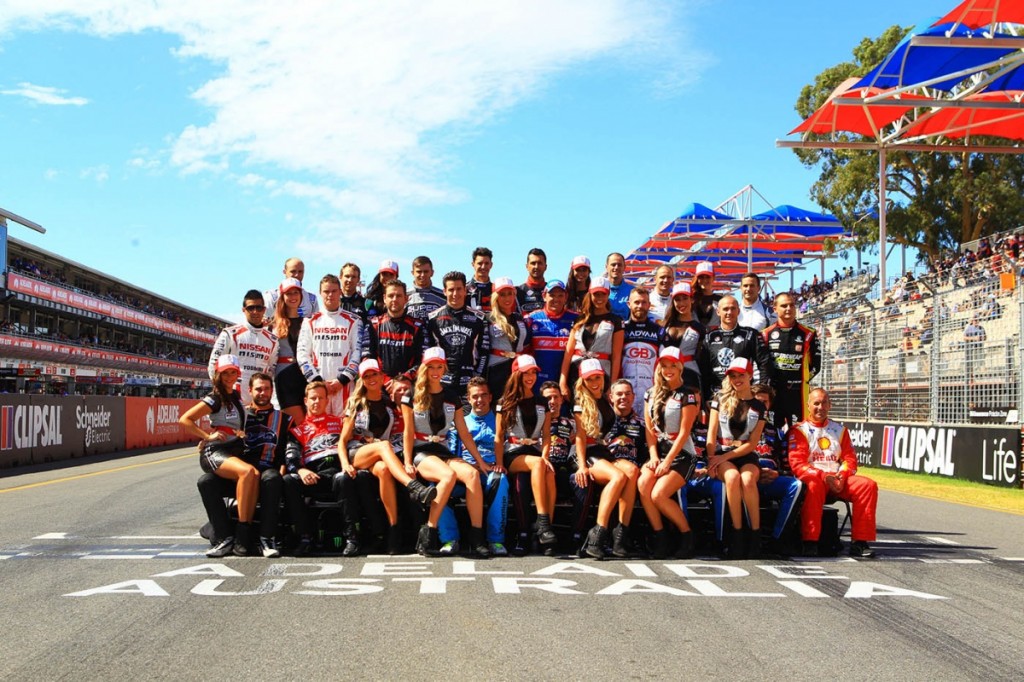Tara Willoughby, Canberra, Australia, SSH Blog Correspondent

For many Australians, cars are a huge part of their lives. Around the country, you’ll find ‘Ford families’ and ‘Holden families’. And like many other pursuits in our society, being ‘into cars’ is a strongly gendered affair – cars are for men. Car culture is perhaps most visible during large public events centred around cars. It is also at these events that more insidious aspects of car culture can be seen, including street harassment. While there is debate about whether there are increased rates of harassment around these events, I will look at two events in particular: the Clipsal 500 in Adelaide and Summernats in Canberra.
The Clipsal 500
The Clipsal 500 is a round of the V8 Supercar Championship Series and takes place over 4 days at the start of March in Adelaide. As well as the race itself, there are a large number of other ‘attractions’ during the event, and it forms part of Adelaide’s ‘Mad March’ celebrations.
In 2009 and 2014, YWCA Adelaide ran the ‘Women’s Safety Survey’ after hearing from young women members that they felt unsafe in the city while the race was in town. Of the almost 400 respondents in 2014, 90% said they felt unsafe at the Clipsal, and 60% said they had experienced an incident around the race that made them feel unsafe.
It has however been questioned whether there truly is an issue of harassment at the Clipsal. Critics point to the lack of a spike in reports to police of harassment and assault during the event, the participants from other Mad March events being in the city at the same time, and the theory that increased numbers of people in the city would actually make it safer (although there is no evidence proposed to support this theory). It is also notable that much street harassment is not of the type people feel the need/ability to report to the police.
Summernats
Summernats is a car festival held over three and a half days in Canberra each year. Like with the Clipsal 500, many women feel unsafe during this event. A colleague of mine described her friend’s experience of being continuously harassed and yelled at to ‘take your top off’ – a shout that has been noted at the event for many years. This year alone many women used social media to complain of sexual harassment around the event.
Police regularly report low or no arrests and reports during Summernats. A further example of the shortfalls of police reports as a metric for measuring street harassment at Summernats comes from 2008, when a mob of 400 men aggressively surrounded and harassed a number of women over several hours and yet police were not involved. That year’s Summernats was described by Police as quieter than the year before. Another mobbing incident was alleged in 2011.
What can we do?
Even assuming that street harassment is no worse in and around car-specific events than in the rest of Australia, there is still an onus on organisers to make their events safe for women. Not only is it good for business, but preventing violence against women is everyone’s responsibility.
So what steps can be taken? To start with, we know that messages from society at large matter. Messages that are disrespectful towards women, messages that support inequality between men and women, messages that have strong distinctions between men’s role and women’s roles, all lead to the perpetration of violence and unhelpful responses from people who witness violence. This is a well-established fact [pdf – see especially page 18]. It’s high time that car event organisers think carefully about the messages they are sending to participants.
Activities solely devoted to appraising women’s appearance are present at both the Clipsal 500 (the bikini parade) and Summernats (the Miss Summernats Beauty Pageant). Likewise both events feature various promotional (female) models and ‘grid girls’. Meanwhile, in 2015, the vast majority of winners at Summernats and all drivers lined up at the Clipsal 500 were men. There’s so much that could be done to change this one-dimensional image of women as inactive sexualised objects and men as serious participants. Welcoming women into traditionally male-dominated arenas is a goal that has received a huge amount of support in Australia, including creation of fantastic research and practical tools. It is also important not to disregard the important place of ‘inactive’ elements like models. There is absolutely no reason why men should not also be welcomed into these areas. Indeed, they can add talent in this area just as women add talent as ‘active’ participants.
Most importantly, street harassment (and sexism and violence more broadly) is an issue that needs to be talked about inside car culture, not just by feminists and academics. These behaviours are simply unacceptable, and there is so much that can be done to change the social structures that allow them to happen. Even just starting the conversation makes a difference.
Tara works with AWAVA (the Australian Women Against Violence Alliance) indulging her love of social media. You can find her on Twitter as @angelbird72 or @Tash_Because or being silly as one half of the ‘slice-of-life’ podcast Heaps Funny But.
